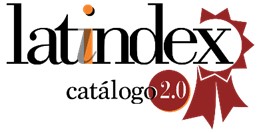Modelos epidemiológicos e o problema da coerência: entre a justificação crítica e uma prática de ensino da modelação matemática
DOI:
https://doi.org/10.48489/quadrante.23597Palavras-chave:
justificação crítica, epidemia, exemplaridade, ensino secundário, modelação matemática, modelo SIRResumo
Exploramos a justificação crítica para a modelação matemática na escola como aquela que permite aos alunos refletir - interna e externamente - sobre o papel dos modelos matemáticos na descrição e modelação dos fenómenos de risco, determinando os cursos de ação das pessoas e informando a tomada de decisão política. Discutimos a exemplaridade da epidemiologia a partir de três perspetivas; subjetiva, instrumental e crítica. Respetivamente, estas referem-se ao caso de ser exemplar para a experiência de vida dos alunos, ideias e competências matemáticas e o poder de formatação da matemática na sociedade. Ao analisar workshops de modelação de epidemias com alunos do ensino secundário na Dinamarca, afirmamos que é possível cumprir essa justificativa, embora alguns desafios permaneçam. As possibilidades surgem ao invocar cenários reais como ponto de partida e estruturando o processo de modelação num ambiente dialógico. O principal desafio é equilibrar o andaime e as sugestões com recursos dialógicos num período de tempo limitado.
Referências
Alrø, H., & Skovsmose, O. (2002). Dialogue and learning in mathematics education: Intention, reflection, critique. Kluwer.
Andersen, A. S., & Kjeldsen, T. H. (2015). A critical review of the key concepts in PPL. In A. S. Andersen & S. Heilesen (Eds.), The Roskilde model: Problem-oriented learning and project work (pp. 17–35). Springer.
Anderson, L., Krathwohl, D., Airasian, P., Cruikshank, K., Mayer, R., Pintrich, P., Raths, J., & Wittrock, M. (Eds.). (2001). The cognitive process dimension. In A taxonomy for learning, teaching, and assessing: A revision of Bloom’s taxonomy of educational objectives (pp. 63–92). Longman.
Andreasen, V, (1995). Matematisk infektionsepidemiologi. Lecture notes. Roskilde University, IMFUFA.
Artigue, M., & Blomhøj, M. (2013). Conceptualising inquiry-based education in mathematics. ZDM, The International Journal on Mathematics Education, 45(6), 797–810. https://doi.org/10.1007/¬s11858-013-0506-6
Bailey, N. T. (1986). Macro-modelling and prediction of epidemic spread at community level. Mathematical Modelling, 7(5-8), 689–717.
Barbosa, J. C. (2006). Mathematical modelling in classroom: A socio-critical and discursive perspective. Zentralblatt Für Didaktik Der Mathematik, 38(3), 293–301.
Beck, U. (1992). Risk society: Towards a new modernity. SAGE.
Beck, U. (2000). Risk society revisited: Theory, politics and research programmes. In B. Adam, U. Beck, & J. Van Loon (Eds.), Risk society and beyond: Critical issues for social theory (pp. 211–229). SAGE.
Blomhøj, M. (2020). Characterising modelling competency in students’ projects: Experiences from a natural science bachelor program. In G. A. Stillman, G. Kaiser, & C. E. Lampen (Eds.), Mathematical Modelling Education and Sense-making (pp. 395-406). Springer. https://doi.org/10.1007/978-3-030-37673-4_34
Blomhøj, M., & Jensen, T. H. (2007). What’s all the fuss about competencies? Experiences with using a competence perspective on mathematics education to develop the teaching of mathematical modelling. In W. Blum, P. Galbraith, H-W. Henn, & M. Niss (Eds.), Modelling and applications in mathematics education. The 14th ICMI-study (pp. 45–56). Springer.
Blomhøj, M., & Kjeldsen, T. H. (2011). Students’ reflections in mathematical modelling projects. In G. Kaiser, W. Blum, R. Borromeo Ferri, & G. Stillman (Eds.), Trends in teaching and learning of mathematical modelling (pp. 385–396). Springer.
Blum, W., & Niss, M. (1991). Applied mathematical problem solving, modelling, applications, and links to other subjects: State trends and issues in mathematics instruction. Educational Studies in Mathematics, 22(1), 37–68. https://doi.org/10.1007/BF00302716
Elicer, R. (2020). On the teaching and learning of probability and statistics in the perspective of Critical Mathematics Education [Doctoral dissertation, Roskilde University]. IMFUFA tekst – i, om og med matematik og fysik. 513. http://thiele.ruc.dk/imfufatekster/pdf/513.pdf
Ernest, P. (2010). The scope and limits of critical mathematics education. In H. Alrø, O. Ravn, & P. Valero (Eds.), Critical Mathematics Education: Past, Present and Future (pp. 65–87). Sense. https://doi.org/10.1163/9789460911644_007
Freire, P., & Macedo, D. (1987). Literacy: Reading the word and the world. Taylor and Francis.
Gravemeijer, K. (1999). How emergent models may foster the constitution of formal mathematics. Mathematical Thinking and Learning, 1, 155–177.
Hmelo-Silver, C. E., Duncan, R. G., & Chinn, C. A. (2007). Scaffolding and achievement in problem-based and inquiry learning: A response to Kirschner, Sweller, and Clark (2006). Educational Psychologist, 42(2), 99–107. https://doi.org/10.1080/00461520701263368
Illeris, K. (2002). Experiential learning. In The three dimensions of learning: Contemporary learning theory in the tension field between the cognitive, the emotional and the social. Roskilde University Press.
Kaiser, G., Blomhøj, M. & Sriraman, B. (2006). Towards a didactical theory for mathematical modelling. ZDM: The International Journal on Mathematics Education, 38(2), 82–85. https://doi.org/10.1007/BF02655882
Kuntze, S., Aizikovitsh-Udi, E., & Clarke, D. (2017). Hybrid task design: connecting learning opportunities related to critical thinking and statistical thinking. ZDM Mathematics Education, 49(6), 923–935. https://doi.org/10.1007/s11858-017-0874-4
Negt, O. (1975). Sociologisk fantasi og eksemplarisk indlæring [Sociological imagination and exemplary learning]. Roskilde Universitetsforlag.
Niss, M., & Blum, W. (2020). The learning and teaching of mathematical modelling. Routledge.
Schoenfeld, A. H. (1992). Learning to think mathematically: Problem solving, meta-cognition, and sense-making in mathematics. In D. Grouws (Ed.), Handbook for research on mathematics teaching and learning (pp. 334–370). MacMillan.
Skovsmose, O. (1992). Democratic competence and reflective knowing in mathematics. For the Learning of Mathematics, 12(2), 2–11.
Skovsmose, O. (1994). Towards a philosophy of critical mathematics education. Kluwer Academic.
Skovsmose, O. (1998). Linking mathematics education and democracy: Citizenship, mathematical archaeology, mathemacy and deliberative interaction. Zentralblatt Für Didaktik Der Mathematik, 30(6), 195–203. https://doi.org/10.1093/humrep/deg124
Skovsmose, O. (2005). Travelling through education: Uncertainty, mathematics, responsibility. Sense.
Skovsmose, O. (2011). An Invitation to Critical Mathematics Education. Sense.
Wagenschein, M. (1956). Zum Begriff des exemplarischen Lehrens [On the concept of exemplary teaching]. Zeitschrift Für Pädagogik, 2, 129–156.










